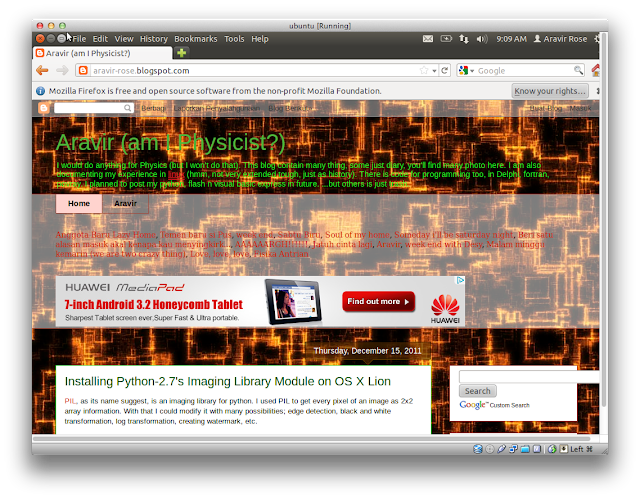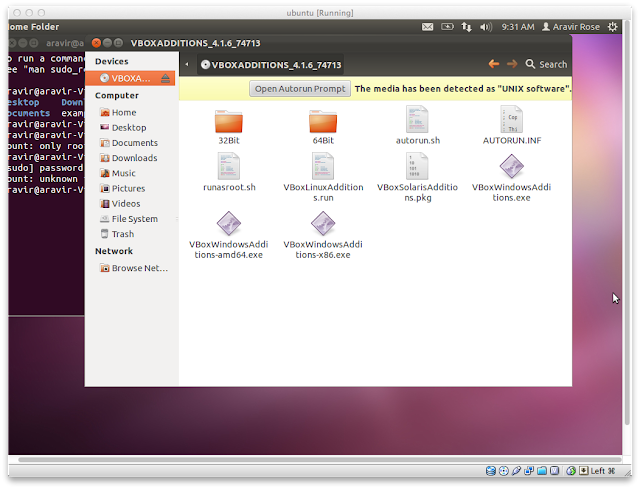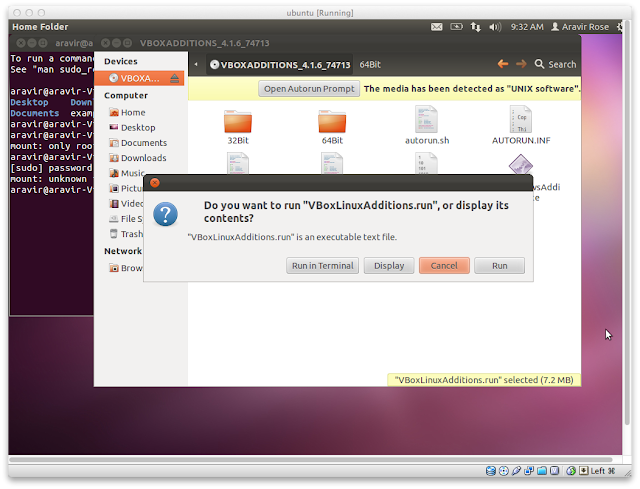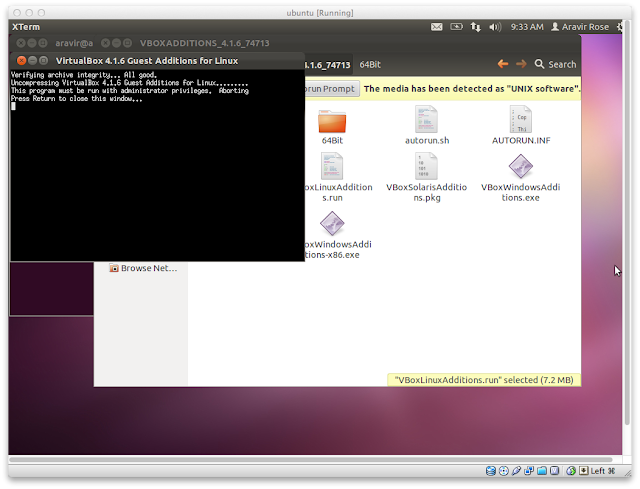PIL, as its name suggest, is an imaging library for python. I used PIL to get every pixel of an image as 2x2 array information. With that I could modify it with many possibilities; edge detection, black and white transformation, log transformation, creating watermark, etc.
{update: I install this PIL module on my OS X El Capitan too, :), and easier } Installing PIL is an easy task, if we have its prerequities installed. Just
download it and extract it and then install using this command
Nugrohos-MacBook-Pro:Imaging-1.1.7 nugroho$ python setup.py install
running install
running build
running build_py
creating build
creating build/lib.macosx-10.6-intel-2.7
...
unable to execute gcc-4.2: No such file or directory
error: command 'gcc-4.2' failed with exit status 1
Nugrohos-MacBook-Pro:Imaging-1.1.7 nugroho$
Oops, it is failed to install, it tell me that there is no gcc-4.2 on my machine, and that's true. I've modified my /usr/bin/gcc to point /usr/local/bin/gcc.
I have
gcc 4.2 from Xcode4.2, which actually llvm-gcc. My existing gcc is
gcc-4.6.2 so I cheated… I created symlink named gcc-4.2 on /usr/bin pointing /usr/local/bin/gcc
Nugrohos-MacBook-Pro:Imaging-1.1.7 nugroho$ ln -s /usr/local/bin/gcc /usr/bin/gcc-4.2
ln: /usr/bin/gcc-4.2: Permission denied
Nugrohos-MacBook-Pro:Imaging-1.1.7 nugroho$ sudo ln -s /usr/local/bin/gcc /usr/bin/gcc-4.2
Nugrohos-MacBook-Pro:Imaging-1.1.7 nugroho$
Still error, :(
gcc-4.2: error: x86_64: No such file or directory
gcc-4.2: error: unrecognized option ‘-arch’
gcc-4.2: error: unrecognized option ‘-arch’
error: command 'gcc-4.2' failed with exit status 1
Hm, maybe if I'm linking /usr/bin/gcc-4.2 to /usr/bin/llvm-gcc-4-2; it's gcc-4.2 after all, if we ignore llvm (don't know what is it stand for). It doesn't hurt if I'm trying, so..
Nugrohos-MacBook-Pro:Imaging-1.1.7 nugroho$ sudo rm /usr/bin/gcc-4.2
Password:
Nugrohos-MacBook-Pro:Imaging-1.1.7 nugroho$ sudo ln -s /usr/bin/llvm-gcc-4.2 /usr/bin/gcc-4.2
Nugrohos-MacBook-Pro:Imaging-1.1.7 nugroho$ python setup.py install
running install
running build
running build_py
running build_ext
-
--------------------------------------------------------------------
PIL 1.1.7 SETUP SUMMARY
--------------------------------------------------------------------
version 1.1.7
platform darwin 2.7.2 (v2.7.2:8527427914a2, Jun 11 2011, 15:22:34)
[GCC 4.2.1 (Apple Inc. build 5666) (dot 3)]
--------------------------------------------------------------------
--- TKINTER support available
*** JPEG support not available
--- ZLIB (PNG/ZIP) support available
*** FREETYPE2 support not available
*** LITTLECMS support not available
--------------------------------------------------------------------
creating /Library/Frameworks/Python.framework/Versions/2.7/lib/python2.7/site-packages/PIL.pth
Nugrohos-MacBook-Pro:Imaging-1.1.7 nugroho$
Wow, success
Well, no need gcc4.6.2 afterall, just create symbolic link of llvm-gcc-4.2 named gcc-4.2,:)
test
Nugrohos-MacBook-Pro:Imaging-1.1.7 nugroho$ python
Python 2.7.2 (v2.7.2:8527427914a2, Jun 11 2011, 15:22:34)
[GCC 4.2.1 (Apple Inc. build 5666) (dot 3)] on darwin
Type "help", "copyright", "credits" or "license" for more information.
>>> import image
Traceback (most recent call last):
File "", line 1, in
ImportError: No module named image
>>> import Image
>>>
OK
















